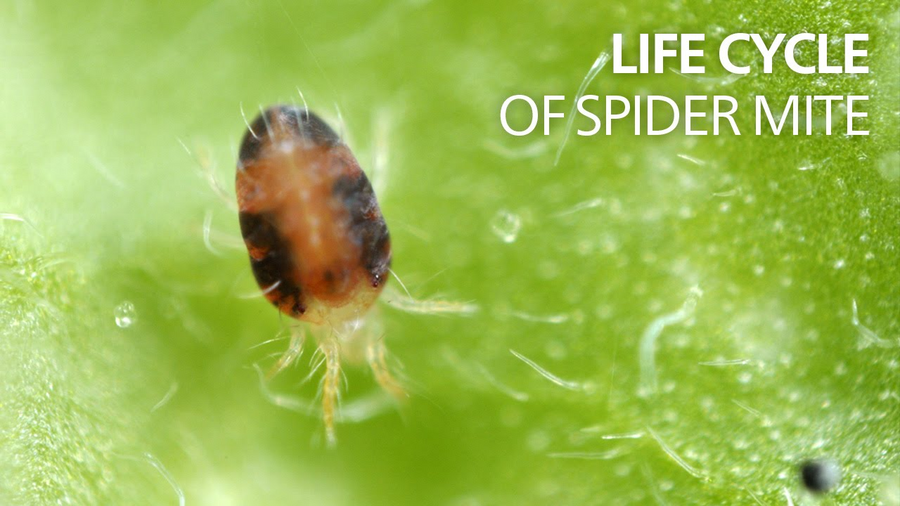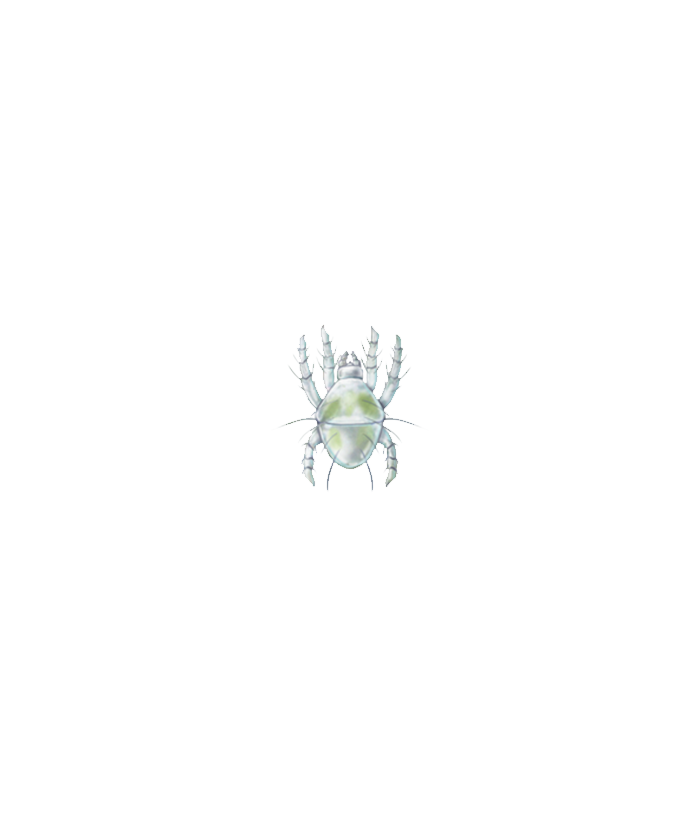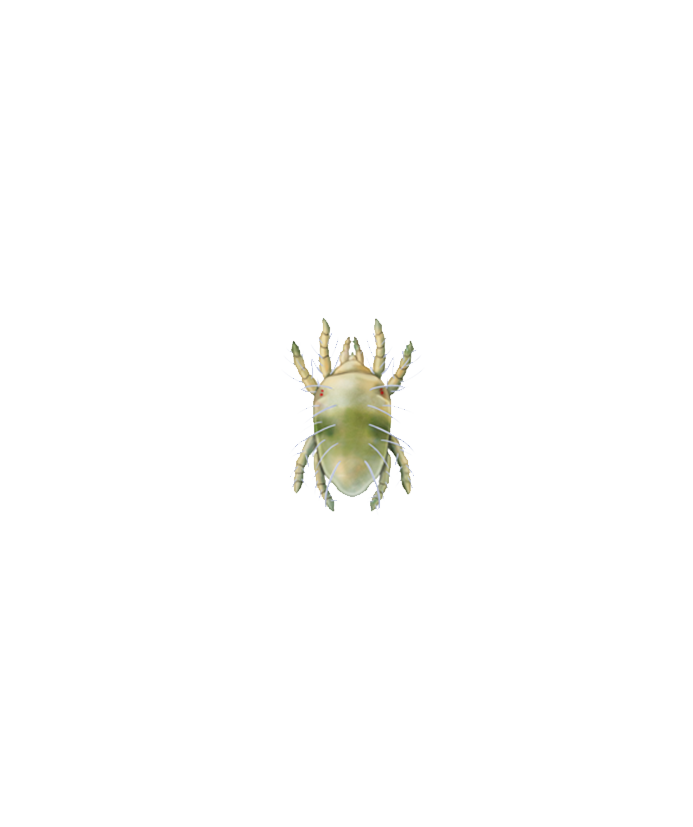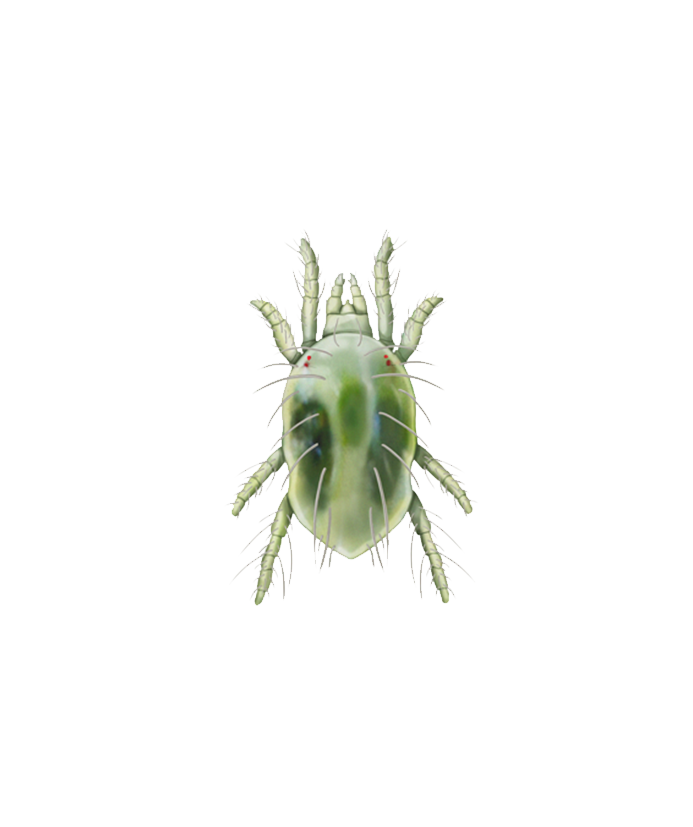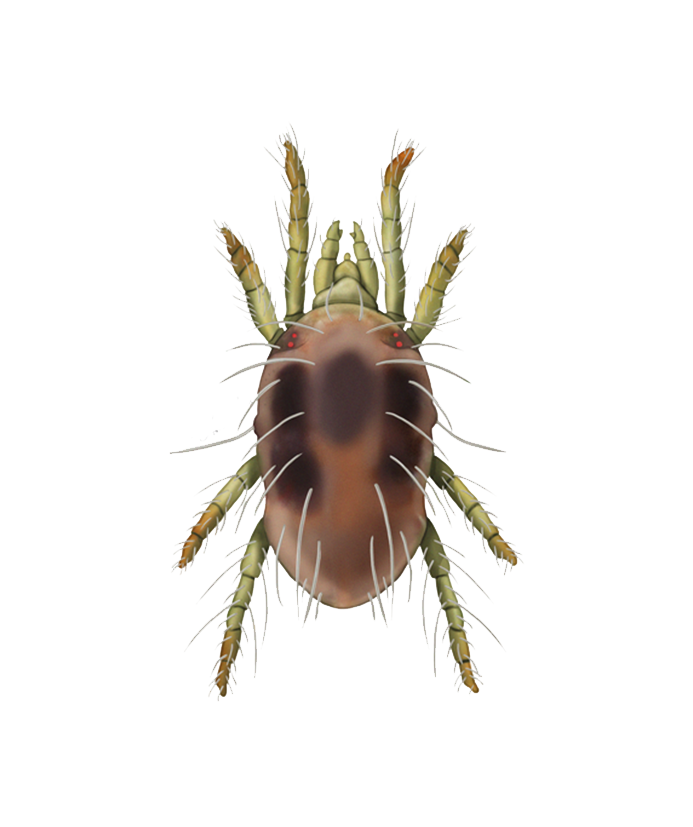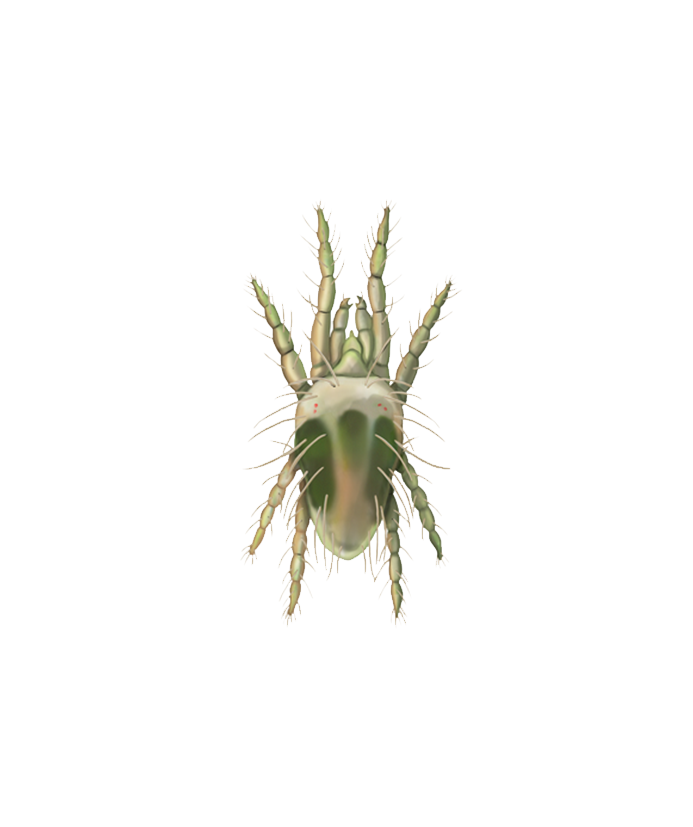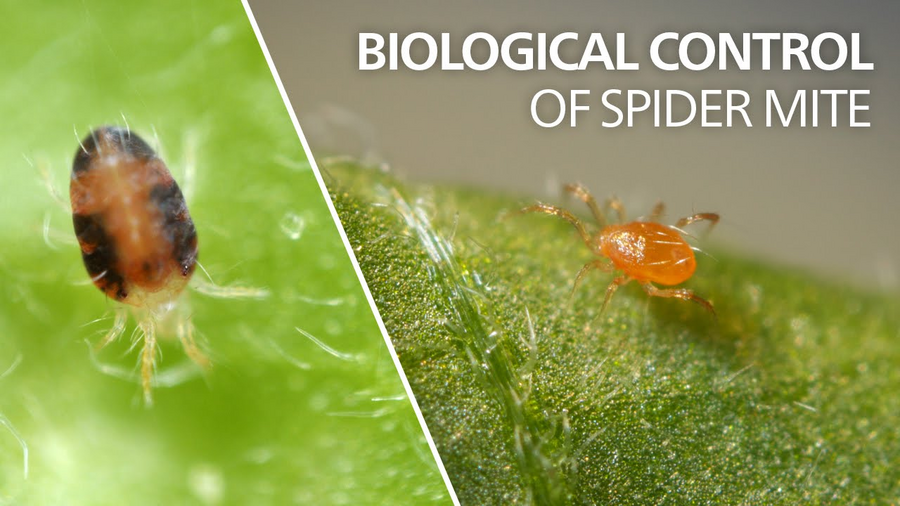What are mites?
Plant mites are a diverse group of small arthropods that feed on plant sap. They are found in a wide variety of habitats, from forests and grasslands to horticultural and agricultural crops. Plant mites can be a significant pest in horticulture and agriculture, causing damage to crops and reducing yields. Some common families and species of plant mites include:
- Spider mites (family Tetranychidae): Two-spotted spider mite (Tetranychus urticae) sometimes also called Carmine spider mite (Tetranychus cinnabarinus), Fruit tree red spider mite (Panonychus ulmi)
- Tarsonemid mites (family Tarsonemidae): Broad mite (Polyphagotarsonemus latus), Cyclamen mite, also called strawberry mite (Phytonemus pallidus)
- Gall mites and russet mites (family Eriophyidae): Tomato russet mite (Aculops lycopersici), Hemp russet mite (Aculops cannabicola)
- False spider mites (family Tenuipalpidae): Flat mite or Red tea mite (Brevipalpus phoenicis)
Each species of plant mite has its own unique characteristics and feeding habits. Plant mites generally thrive in warm and dry conditions, which is why they are often problematic in greenhouses and during hot, dry weather outdoors. Controlling plant mites can be challenging due to their rapid reproduction and development of resistance to certain pesticides. Integrated pest management (IPM) techniques, including biological control methods, are commonly employed to manage mite infestations and protect plant health.
Life cycle of mites
The life cycle of mites typically consists of four stages: egg, larva, nymph, and adult. The duration of their life cycle can vary depending on factors such as temperature, humidity, and the availability of food. Here's an overview of the life cycle of plant mites:
- Egg: The life cycle begins with the female mite laying eggs. The eggs are usually spherical and laid on the underside of leaves or on other parts of the plant. The number of eggs laid by a single female can vary, and they can hatch within a few days to a couple of weeks, again depending on environmental conditions.
- Larva: Once the eggs hatch, the mite larvae emerge. These larvae have three pairs of legs, except for Eriophyidae which have two pairs of legs. During this stage, the larvae start to feed on plant sap and undergo molting to transition to the next stage.
- Nymph: After the first molt, the mite larvae become nymphs. Nymphs have four pairs of legs, except for Eriophyidae which have two pairs of legs. They continue feeding on the host plant and go through several molts, shedding their exoskeleton as they grow.
- Adult: When the nymphs reach maturity through a series of molts, they become adults. At this stage, they are fully developed, and their coloration and appearance become more distinct. The adults continue feeding on the plant sap and reproduce to lay new eggs, starting the life cycle over again.
The life cycle of plant mites can be quite rapid under favorable conditions, with some species completing their life cycle in as little as one to two weeks. This rapid development contributes to their ability to multiply rapidly and cause significant damage to plants if left uncontrolled. Their short life cycle also makes them particularly challenging to manage through traditional pest control methods, emphasizing the importance of integrated pest management strategies to keep mite populations in check.
Recognize mites
Plant mites can be recognized by their small size and spider-like appearance. Spider mites and false spider mites are typically less than 1 millimeter in size, and range in color from pale yellow to green, brown, or red. They have eight legs and are closely related to spiders, but they lack the distinct body segmentation that spiders have. Gall mites and russet mites are so small that they cannot be seen with the naked eye and only have four legs. Tarsonemid mites cannot also not be seen with the naked eye but have eight legs. For these plant mites a magnifying glass is needed to detect them.
Plant mites are often found in colonies on the undersides of leaves, where they feed on the plant's sap. The damage caused by plant mites can result in discolored or speckled leaves, stunted growth, and in severe cases, leaf drop or death of the plant. Damage symptoms are important for early detection of plant-feeding mites and effective management, as their small size and tendency to hide on the underside of leaves can make them difficult to spot.
Mite damage
Spider mite damage
Some common signs of spider mite damage include yellowing or browning of leaves, stippling or mottling of leaves (small white or yellow spots), and webbing on leaves and stems. The leaves may also become distorted or curled, and the plant may appear stunted or have reduced growth. In severe cases, the leaves may drop prematurely and the plant may die. Additionally, spider mites reduce the plant's ability to photosynthesize, which can lead to reduced yields and quality of fruits and vegetables.
Broad mite damage
Broad mites cause a distinct type of damage known as "bronzing", which can be confused with damage caused by plant viruses. This appears as a bronze or reddish-brown discoloration of the leaves, with the affected areas curling and twisting. This damage is caused by the mites feeding on the plant tissue, which disrupts the growth and development of the leaves.
False spider mite damage
False spider mites, also known as flat mites, can cause a range of damage, depending on the species and the host plant. They often cause yellow-brown spots and discoloration on the leaves. Some species induce the formation of leaf gall. Infested fruits can show yellow or brown spots or can be distorted. Heavy infestation can affect the overall health and growth of the plant and lead to lower yields.
Russet mite damage
Russet mites are also known for causing bronzing on the leaves, as well as other symptoms such as leaf curling, wilting, and necrosis.
How to prevent mites
Keeping your greenhouse crop free of plant mite infestations requires a combination of proactive measures. One key step is to maintain optimal growing conditions for your plants through proper watering, fertilization, and temperature control. Stressed plants are more vulnerable to mite attacks, so keeping them healthy and strong is essential. Regular monitoring of your plants for early signs of plant mites is also critical. This can be done by scouting the plants visually.
You can also take steps to prevent plant mites from entering your greenhouse by using hygienic measures such as removing weeds and other plants that may serve as a host for mites, and implementing a rigorous cleaning and disinfection program for all tools, equipment, and surfaces.
Finally, introducing biological control agents such as predatory mites can be an effective way to keep plant mite populations under control.
Mite control videos
Take a look at the video or go to our Youtube channel to see our mite control products in action.
